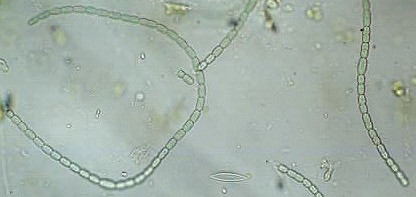Virus uses 'stolen' CRISPR to hack its host's immune system
June 14, 2016

June 14, 2016

A virus that infects major freshwater bacteria appears to use stolen bits of immune system DNA to highjack their hosts’ immune response.
Microbiologists have discovered that the virus, Cyanophage N1, carries a DNA sequence—a CRISPR—that is generally used by bacteria to fight off viral infection.
“This is the first evidence we’ve seen that a virus can donate an immunity system via CRISPR,” says University of British Columbia virologist Curtis Suttle. “This is like a hacker compromising a computer system, and then immediately patching it to ensure other hackers can’t break in.”
CRISPR—or clustered regularly interspaced short palindromic repeats—are libraries of DNA typically used by bacteria to identify, and then destroy, infecting viruses. Since 2012, CRISPR has also been adopted by scientists as a revolutionary gene editing and manipulation technique.
Suttle and UBC colleagues Caroline Chénard and Jennifer Wirth say the N1 virus likely uses the trick to help cyanobacteria from the ecologically important Nostoc and Anabaena genera to fight off infection by other viruses, while continuing to be a suitable host for itself.
“Bacteria and their viruses have a shared evolutionary history stretching for billions of years,” says Suttle. “So at some point along the way N1 stole a defensive CRISPR array from Nostoc or a close relative.”
Both groups of cyanobacteria are abundant members of habitats ranging from the bottom of ice-covered polar lakes, hypertrophic coastal lagoons, to rice paddy soils and rock-pool communities in Karst regions.
Their ancestors were responsible for producing the oxygen on Earth, and close relatives of Nostoc are still responsible for producing a huge portion of the air we breathe.
The finding was published in the American Society for Microbiology journal mBio.
We honour xwməθkwəy̓ əm (Musqueam) on whose ancestral, unceded territory UBC Vancouver is situated. UBC Science is committed to building meaningful relationships with Indigenous peoples so we can advance Reconciliation and ensure traditional ways of knowing enrich our teaching and research.
Learn more: Musqueam First Nation